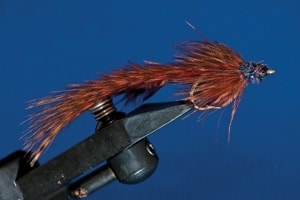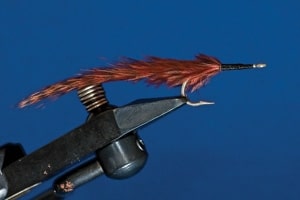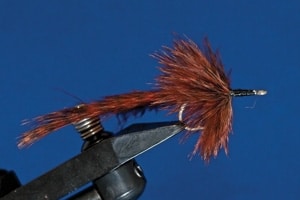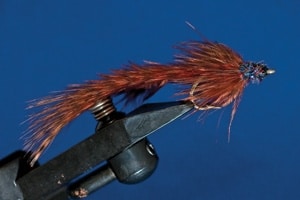
Worm hatches – or more appropriately, spawning events – are among the most mysterious and unpredictable phenomena in saltwater fishing. Many believe these events are governed by spring and summer moon phases, particularly the full moon, which adds a tribal sense when attempting to decipher them.
Spawns occur during different periods of the season. Some take place in the spring while others happen in the summer. Great variation also exists in their timing: Some events unfold late in the afternoon while others materialize in the evening and run throughout the night. Similarly, spawns occur at different locations along the coast – to the point that even within specific bodies of water (a given salt pond, for example), worms often emerge at different stages of the season.
In short, worm spawns are very difficult to predict.
The Cinder Worm
There are hundreds of worm species found throughout the Atlantic, but the cinder worm (Nereis limbata) is the Northeast’s most prevalent. When water temperatures approach 60 degrees, they emerge from the bottom. It’s usually a gradual process with modest activity during the first few days, and while cold fronts occasionally shut things down, the crescendo heightens for weeks as temps move into the low- to mid-60s.
Striped bass, hickory shad and occasionally bluefish somehow are aware of all this and usually show up when it happens. The first time you experience a worm event, it’s like being immersed in a sci-fi movie. When conditions are prime, it often starts like a snowstorm but quickly escalates to a dazzling blizzard. Worms wriggle everywhere (about four per square foot) and game fish ravenously slurp them down. It’s eerie and exhilarating!
Despite the great numbers of fish that may show up at a worm spawn, they’re sometimes very difficult to catch, particularly during afternoon events with the sun on the water.
Many fine worm patterns exist, but only a few consistently fool fish year to year. I’ve found that surface flies in rust or brown colors – and slightly longer than the prevailing worms – are as consistent as any, and over the years I strove to develop a bug that wiggles and captures the undulating leg movements of a swimming worm.
The Witch Doctor is the result.
It’s All in the Feather
Many of my early attempts to develop an action-oriented worm imitation utilizing all manner of materials and complex tying techniques were unsuccessful. It’s just plain hard to do.
While taking a break one day, I gazed at the materials on my desk and realized the answer was right under my nose. In the flare of a neck resting upside-down were soft, magical feathers – plumage technically referred to as “aftershaft” feathers.
They’re nestled along the back of a neck, near its base. Jack Gartside, whose creative use of entire birds or animal skins is legendary, discovered these ideal worm feathers. Jack thoughtfully brought to my attention a 1976 article by Pete Laszlo that highlights a Gartside pattern called the Sparrow, which he describes as “a close imitation of the spawning sandworm.”
Jack’s work has greatly influenced many tiers over the years, and his style and tying philosophy are at the core of the Witch Doctor. I certainly must thank him.
The Doctor is soft and has lots of inherent movement. It’s effective and simple – three steps and glue it! The obvious key is the aftershaft feather, which is tied in flat to permit side-to-side wiggling. A soft, palmered collar immediately ahead of the aftershaft feather, followed by a black sparkle chenille head, completes this easy design.
Use small #4 to #1 hooks, as they keep the fly swimming hook-down yet are light enough to let it ride near the surface with incredible wormlike action.
I fish this fly with a floating line, 6- to 7-foot monofilament leaders and a choppy one- or two-handed retrieve interspersed with periodic pauses. This erratic retrieve jiggles the fly along the surface in a wormlike fashion. Cast the fly to spots where you anticipate fish and to surface boils. The takes are subtle, so set the hook with a gentle strip-strike.
Though there are no magic-bullet flies for worm fishing, the Witch Doctor is a simple and sound addition to your fly box. Give it a try next time.
Materials
HOOK: Gamakatsu SS-15 or Mustad 3407, #4 to #1
THREAD: Black Danville’s flat waxed nylon
WING: One wide (1-inch to 2-inch) rust/black grizzly aftershaft feather
COLLAR: One wide (1-inch to 1½-inch) rust/black aftershaft feather
HEAD: Medium, black sparkle chenille
Tying Instructions
| Step 1: Flatten the barb and wrap thread to cover the shank, then back-wrap thread forward to a position halfway between the hook point and eye. Secure a single aftershaft feather flat to the back of the hook shank. The length of this feather can range from 3 inches for a size #1 hook to 1½ inches for a #4 hook. |

| | Step 2: Secure a single, soft collar feather to the shank at the wing-feather attachment. Palmer it forward with 4 or 5 turns, secure and trim excess.|

| | Step 3: Attach the chenille to the hook where the collar feather is secured, and with 3 to 5 turns (slightly over-wrapping the collar to ensure that it lays backward and not straight out from the hook shank), form an oval-shaped head that concludes at the eye of the hook. Trim chenille, secure thread and finish with penetrating head cement. |

|









